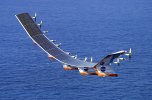Well done Mick and everyone else on solving this so quickly. I will say, it's a bit unfair to criticize the SCU so harshly. Though if they'd sought out more collaboration from people here, people familiar with Starlink trains shortly after launch, they wouldn't have looked so foolish. Also the supplemental sets don't appear in satellite tracking software, so unless you knew what to look for, you wouldn't find it.
I'm not making excuses, I find it pretty disappointing and embarrassing too.
Mick, do you plan on making a video? I'm sure when presented with conclusive evidence, as in this case, they would make a correction.



